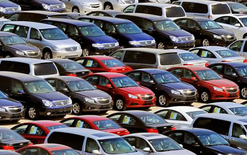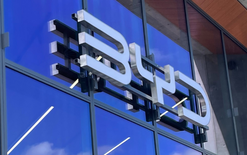Putting EV owners in charge

Flip the Fleet, a representation of low-emission car owners, surveyed 108 Kiwi electric vehicle (EV) owners to identify what makes the ideal charging station.
Top priority for respondents was to drive up and plug in to a charger in full working order, without having to queue. Immediate availability was almost twice as important as all the other features desired in a charging station. The survey found that EV owners are on average having to wait their turn to charge on 14 per cent of visits, for an average wait of between nine and 12 minutes. These owners want more chargers installed at the charging station to alleviate congestion.
“EV owners do nearly all their charging at home, where it is cheap, convenient and reliable. But it’s also important to have access to rapid chargers on those occasional long trips away from home” says Justin Boyd, a Flip the Fleet participant and co-ordinator to the Waikato EV group.
The survey showed that, while long-distance travel depends on creating a network of charging stations every 75 km along the main highways throughout New Zealand, more chargers are needed to relieve growing congestion in the main centres where most EV are driven.
After immediate availability of the charger, the second-most important issue for men was locating the chargers close to a main route. Women prioritized high visibility to increase their personal security while waiting to charge and were more content to drive further off the main route to charge if necessary. Proximity to shops and food, also a favourite for men, and a public toilet, especially for women, were less important. A minority want to charge close to a park for the kids or natural areas for a walk, or just to enjoy a good view while their car charges.
“I want something to do while I charge,” said a respondent. “Knowing I can get back to my car quickly when required, I stop, go to the toilet, grab a snack, maybe get some stuff for home and then head off.” There is a handy app from ChargeNet that will send a text to the user when the car is fully charged. Shelter from the weather was important, too.
Justin Boyd believes education of EV and ICE owners will help to reduce congestion at chargers.
“As the survey shows, sometimes EV owners leave their car at the charger while they go to do some shopping and don’t return in time before it’s full,” he says. “So the car is fully charged but is blocking access for others.”
EV owners get most aggravated when they get ‘ICEd’. That’s their term for finding that an ICE (internal combustion engine) car has taken the EV’s charging spot.
“If parking is at a premium, and the charger is key to getting home, it’s frustrating to find an ICE owner has taken the only charging spot in the vicinity,” Boyd says. “How would people feel if an EV blocked the only petrol station between them and home? We need to continue to promote the benefits of EVs to all the community and to build mutual respect to the needs of drivers of both ICE cars and EVs.”
Fortunately, the survey found that ICEing happens only around 2 per cent of the time on average. The exception is Dunedin, where EV owners are blocked from the charger between 6 per cent and 15 per cent of the time.
Boyd welcomes the issues raised by the survey.
“The more we know about the developing issues, the better placed we are to lobby for them to be corrected,” he says. “It’s a collective effort of government and business to build the charging network, and we are supremely grateful for their investments.”
Flip the Fleet is a citizen science project that provides scientifically reliable information on the benefits and constraints of electric vehicles in New Zealand. This survey was partly funded by the Government’s Curious Minds portfolio, and partly by its Low Emission Vehicles Contestable Fund, administered by the Energy Efficiency and Conservation Authority (EECA).
Participation is free and all New Zealand’s electric vehicle owners can enrol at www.flipthefleet.org.





